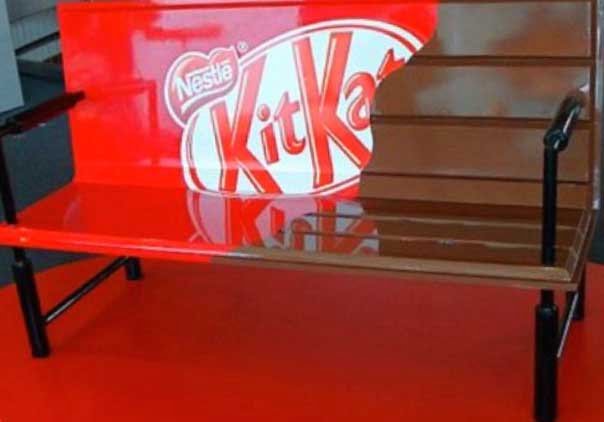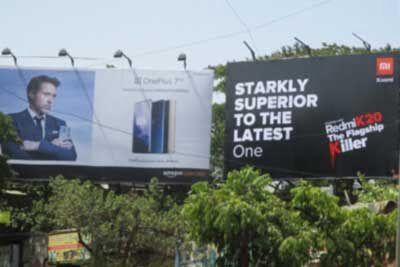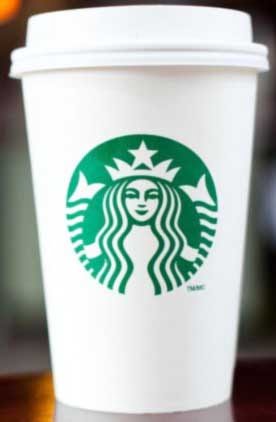This Article Discuss Guerrilla Marketing. Guerrilla marketing is a promotional technique in which a company uses surprise and/or unorthodox methods to advertise a service or product. It is a type of commercial. Guerrilla marketing appears to be cheaper than traditional marketing. The concept of Guerrilla Marketing was proposed by Jay Conrad Levinson was popularized in the year 1984.
Guerrilla marketing makes use of various strategies and activities to create direct consumer contact. One of the aims of this interaction is to trigger a client’s emotional response. The main aim of marketing is to get people to perceive goods or brands differently than what they are used to.

You call in the guerrillas when the traditional tactics aren’t delivering. They are the extra-special forces-the ones adopting killer tactics to turn the tide and defeat the enemy.
A perfect alternative to conventional marketing is guerrilla marketing. It thrives on innovative thought and ingenuity, where innovation and naivety beat out massive budgets.
When conventional media of advertisement – such as print, television, radio, and mail – lose influence, marketers, and advertisers need to find new ways to bring their marketing messages to the customer. Guerrilla marketing gives emphasis on attracting the customer by surprise to give the product or company a significant impact. This in effect gives rise to hype about the product being advertised. Guerrilla marketing is a variant of advertisement that increases the commitment of customers to the service or product and is formulated to create a memorable and experience. This also increases the probability that a customer who interacted with the advertisement, will recommend products to their friends, by creating a positive experience. The service or product being marketed reaches more people than originally planned via word of mouth.
Guerrilla marketing is fairly inexpensive and focuses more on scope rather than frequency. Companies don’t need to invest huge money for guerrilla marketing campaigns to be successful; they only need creativity, energy, and time. It, therefore, has the capability for small businesses to succeed, especially if they compete against bigger businesses.
The message is also intended to be transparent and succinct to the consumers. That kind of messaging often acts on the unconscious mind, since the unconscious mind also makes buying decisions. It takes repetition to keep the product or service in the unconscious mind because if a buzz is generated around a product, and it is shared by friends, it allows repetition.
The word “guerrilla marketing” is linked to guerrilla warfare, which uses atypical methods to attain a target. In 1984 the term guerrilla marketing was coined by Jay Conrad Levinson and Leo Burnett in his book Guerrilla Marketing. The concept itself originated from guerrilla warfare influence, which was unconventional tactics using various methods from the normal and minor military approaches used by armed civilians. Implementing a publicity campaign for the guerrillas requires high levels of imagination and energy. This type of marketing is based solely on shocking the customer, making a bigger impression and ultimately contributing to word-of-mouth or social media channels buzzing.
Guerrilla marketing is ideal for a small or medium-sized company to promote its services or goods to its customers without spending more resources on the advertisement. Large corporations have used this to demonstrate the difference from their rivals and to use social media strategies. Individuals have increasingly been using unorthodox forms of searching for employment or to work more. As a result, the street marketing idea was born. It developed from being merely the implementation of street events, to being the creation of creative promotional practices. For example, the distribution of flyers is one approach that many businesses use to advertise their goods or services on the streets. This practice is not about imagination but about street ads. Over time, however, businesses have developed more innovative strategies to attract customers’ attention.
TYPES
1. Ambient marketing:
Ambient marketing is advertising displayed on environmental items, on almost any physical surface available. It is a collection of atmospheric knowledge, versatility, and productive use. From hand dryers in public toilets and gas stations through to bus hand ties and golf-hole cups, these kinds of advertisements can be found anywhere and anywhere.

2. Ambush marketing:
Ambush marketing is a form of associative marketing that an organization uses to focus on the visibility, advertising, goodwill, and other benefits of having an affiliation with an event or property without having an official or direct connection to that event or property. It is typically seen at major events where official sponsor rivals try to build an association with the event, and sometimes covertly raise awareness for their brands. For example, At the 2012 London Olympics, Nike had spots where they featured athletes from several cities named London (but without revealing the actual London or linking to the Olympic Games) intended to create a good association between London Olympics and Nike.

3. Stealth Marketing:
Stealth marketing is a deliberate act of, or attempt to, reach, operate, or exit a market in a furtive, clandestine, or imperceptible manner.

4. Viral / Buzz Marketing:
Viral marketing describes any technique that allows individuals to communicate a brand message to others, creating opportunities for rapid growth in the visibility and effect of the product. These techniques, such as viruses, leverage accelerated replication to blast the message to millions, or thousands. Viral marketing is referred to as “word-of-mouth” off the Internet, “creating a wave,” “network promotion,” “leveraging advertising,” but on the Internet, for better or worse, it’s simply “viral marketing.” Similarly, wave marketing employs high profile media to promote consumer interest in the brand or product. Buzz marketing performs best because consumer responses to a product or service are genuine and the company does not pay for the resulting endorsements. The noise created by marketing efforts for noise is called “amplified WOM” (word-of-mouth), and “Only Word of Mount” happens when consumer random buzz happens.

5. Grassroots Marketing:
Grassroots marketing seeks to win individual consumers over. An effective grassroots campaign is not about spreading the marketing message in the hope of paying attention to potential customers, but instead emphasizes a personal bond between the customer and the brand and creates a lifelong relationship with the brand.
6. Astroturfing:
Astroturfing is the practice of hiding the sponsors (e.g. political, advertising, religious or public relations) of a message or group to make it look as though it comes from an individual in and is sponsored by a grassroots participant. It is a technique intended to provide authenticity to the claims or entities by hiding information on the monetary relation of the source.
7. Street Marketing:
Street marketing uses unorthodox ways to promote or advertise goods and brands in public spaces. The key purpose is to enable customers to identify and recall the label or product that has been advertised. As a branch of the guerrilla marketing, street marketing is synonymous with all marketing operations carried out in streets and public places such as parks, sidewalks, festivals, etc. Street marketing also includes outdoor advertising such as on shopping trolleys (shopping carts, in the USA), public toilets, car or public transportation sides, manhole coverings, footpaths, rubbish bins, etc. Street marketing is not just about commercial organizations. Companies use brand ambassadors to give product samples or coupon coupons, and address product questions while marketing the brand, is standard practice. A kiosk containing samples of the product or demonstration content may accompany the brand ambassadors, or they may wear a “rolling billboard.” Active customer contact has greater control power than conventional passive advertising. Street marketing is known not only to uses the public space but also the urban imagination: that of popular street art and culture. Because of its connections with the street culture, the Y-generation, which is largely made up of young urbanites (15 – 30 years old), is also placed forward as the most vulnerable group for the campaigns. According to Marcel Saucet and Bernard Cova, street marketing can be used as a general concept that involves six key forms of activity:
- Flyer or product distribution: this activity is more conventional and is the most common form of street marketing used by brands.
- Product animations: This involves customizing a high-traffic space using brand imagery. The idea is to build a micro-universe for a new product or service to promote.
- Human animations: These acts seek to create an environment where the meaning of the brand is conveyed through human interaction.
- Roadshows: This type of mobile display is focused on the creation of means of transportation: cab, bike, Segway, etc.
- Exposed actions: these operations include the customization of street features.
- Event actions: Spectacles such as flash mobs or tournaments take the shape of certain events. The aim is to encourage the importance of a good, service, or brand by planning a public event.
Guerrilla Marketing Principles
- Measuring success through profit, not sales.
- Instead of prioritizing new clients, increasing the amount and scale of current customers’ purchases and obtaining referrals are given priority.
- Target communications at small communities, rather than large markets.
- Focus on obtaining the consumer’s permission to give them more details.
- Commit to advertising, seeking a successful pace, instead of any time producing a new post.
Guerrilla Marketing Pros & Cons
Pros in Guerrilla Marketing
- Inexpensive to execute: By using a plain stencil or a giant sticker, the promotion of guerrillas appears to be much cheaper than traditional ads.
- Gives imaginative thinking: Imagination is more critical than budget with guerrilla marketing.
- Grows with Mouth-of-Word: Guerrilla marketing is heavily dependent on word-of-mouth marketing, considered one of the most powerful weapons in a marketer’s arsenal by many. There’s nothing better than getting people to talk their own way about your campaign.
- Publicity will ball of snow: Any especially interesting or special publicity campaigns for the guerrillas would be picked up by local (and even national) news outlets, resulting in an advertisement force that advertisers drooling over.
Cons in Guerrilla Marketing
- Hidden signals may be confused.
- Guerrilla marketing campaigns also have an air of ambiguity and whilst this sense of mystery can also propel the interest and awareness of a campaign, the lack of clarification can often distort the perception of the viewer.
- The confusion associated with marketing campaigns for guerrillas may have serious consequences, such as when blinking LED circuit boards advertising a new animation film, Aqua Teen Hunger Force, were secretly placed across Boston City in 2007. The items were mistaken for explosive devices, creating chaos across the city when bomb squads were called in to investigate the suspected devices and destroy them.
- The hired installers had even been arrested for mounting “hoax devices,” but released later. While the naming of this campaign as a failure would be straightforward, the news has been picked up by major television networks around the world, and others will actually call it a victory gave the entire debacle.
- Intervention by the authority: Certain forms of guerrilla marketing, such as unpermitted street graffiti, can contribute to conflict with authorities.
- Unpredicted obstacles: Certain techniques in guerrilla marketing are vulnerable to poor weather, scheduling thrown, and other minor incidents that could quickly threaten to sabotage a whole operation.
- Potential backlash: Sophisticated viewers can call out companies who do not approve of guerrilla marketing campaigns. This is true for covert ad activities – expect to face the wrath if you’re caught.
- There is no question that guerrilla marketing will produce incredible results by encouraging marketers to exercise their imagination in a creative way, but it can only succeed with businesses who are not afraid of taking risks.
What kind of Guerrilla marketing is Effective?
Guerrilla marketing was structured specifically to reach current consumers, rather than new ones, with the goal of increasing their loyalty to a product and/or brand. A demographic that already identifies with the commodity at any stage is the ideal choice when targeting consumers for a tactical message; it would be easier to understand and adapt to innovative strategies, and more likely to share the experience with their peers.
Social media is now a significant part of the consumer environment, online guerrilla marketing has proven especially successful. Consumers who use social media on a daily basis are more likely to post their experiences with guerrilla marketing, and innovative advertisements will go viral quickly.
Step by Step Process of Creating Guerrilla Marketing Strategy?
A guerrilla strategy starts with an innovative and entertaining concept, usually including not just the message material but its shape. Surprises and creative marketing approaches are the main ingredients for attracting customer curiosity.
A variety of creative methods may be employed — and indeed, using a combination of methods is one of the principles of guerrilla marketing. Graffiti (or reverse graffiti, where a filthy wall is randomly cleaned), immersive exhibits, public area capture experiences, flash mobs, or other Publicity tricks are often used. The ultimate marketing strategy will be coherent when using a range of approaches. Repeated sightings of the surprise message create curiosity and shifting messaging after each trick appears to confuse or diminish a consumer’s curiosity in the brand. The shocking message will encourage customers to share their discovery with friends. There, mobile phones’ omnipresence works for covert marketing. The strategy must be something fresh and unique to attract customers. Those delighted with the unique message will share it this way. Each “oh, check this out” photo a customer sends to a friend is more advertisement. And because this commercial comes from a relative rather than from the vendor, it holds more interest. A positive occurrence causes a buzz — or even more so, it goes viral. It is much better to get people thinking about your product than to complain to others about your company. It takes with it an amount of difficulty to create a special experience. Specifically, an unnecessarily imaginative conversation may be misinterpreted.
If you Like this Article Please Hit the Like Button and Follow Us on our Facebook Page: PROJECTS4MBA